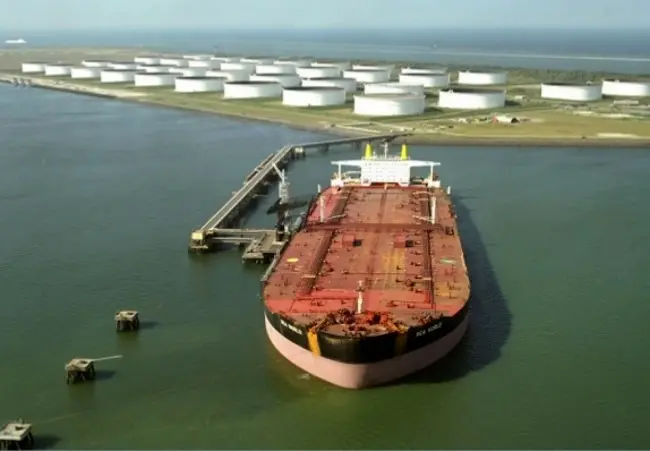VLCC Tanker Freight Rates Revised Upwards By Shipbroker Charles R. Weber

Tanker market specialist, shipbroker Charles R. Weber expectes tanker rates to gradually improve in the medium term and up until the end of the year. In its latest weekly report, the shipbroker said that “rates in the Caribbean VLCC market have experienced strong gains since early August on the back of a decline in USG arrivals and a strengthening outbound cargo demand, including a 42% rise in average weekly ex‐USG cargoes since Q1. The benchmark CBS‐SPORE route has risen by 48% to $4.00m lump sum, even as rates on all other routes have been under strong negative pressure”.
According to CR Weber, “though the Caribbean market’s rate gains have failed to stop a decline in average earnings – which at just ~$10,994/day stand below OPEX levels – the situation presents an interesting development for the VLCC market and represents a positive indicator for performance during Q4. Amid the shortfall in regional positions, nine spot‐oriented VLCCs have opted to ballast towards the region from Asia; two of these were fixed for Caribbean market cargoes while they remained available for Middle East cargoes while the remainder were subsequently undertaken speculatively based on potentially better TCE earnings”.
Indeed, “even when adding the 24 more ballast days Asian ballasters require to reach the Caribbean relative to the Middle East market, such trades can offer a TCE as high as ~$25,888/day, assuming a subsequent ballast back to the Middle East (at a time when seasonal factors typically dictate a better trading environment)”, CR Weber noted.
It added that “east market by an equal number. We currently estimate that there are 29 surplus positions for Middle East cargoes loading up to the end of September – the highest since June 2014. A surplus of 38 units would have represented the loftiest surplus since August 2012, when AG‐FEAST TCEs averaged just ~$5,069/day, or 38% below present levels. Thus, the immediate impact of these ballasters in terms of cushioning market lows is evident”.
CR Weber then said that “more importantly, however, is the forward impact on supply/demand dynamics during Q4. With fleet efficiency declining on the back of this trend and the units engaged in ex‐CBS trades removed from position lists for longer periods, availability replenishment in the Middle East should decline during the coming weeks – just as the market progresses into a traditionally stronger quarter. The extent to which the present trend will prevail is uncertain, but it appears likely to remain for at least the near‐term. Aiding this, five VLCC cargoes were fixed in the North Sea this week, representing a high number of draws on North Sea arrivals which typically are otherwise drawn to the Caribbean for subsequent trades. Tempering the positive impact from the Asia‐Caribbean ballast trend, we note that the net number of units engaged in floating storage has declined by 14 units since mid‐August (many already being reflected in availability levels), likely due to a recent uptick in crude prices. We had previously envisioned such a return to take place during early/mid‐Q4, rather than during Q3”.
“In forecasting average VLCC earnings during Q4, we balance the earlier return of floating storage units, which has prompted us to downwardly revise our earnings expectations for the start of the quarter, against the Asia‐Caribbean ballast trend, which has prompted us to upwardly revise our expectations from mid/late October onwards. Accordingly, we presently envision average earnings during Q4 of $25,750/day, as compared with a month‐ago projection of $24,750/day”, CR Weber concluded.
Meanwhile, in the VLCC tanker market this week, CR Weber noted that “any positive pressure on rates that had accompanied last week’s strong surge in Middle East demand evaporated this week as the September program in that region appears to be near an abrupt end and overall demand was light as charterers were yet to commence coverage of the October program in earnest. This week’s tally of Middle East fixtures was slashed down 64% w/w to just 15 fixtures. Some cushioning on the negative impact on rates came, however, from sustained elevated demand in the Atlantic basin. The West Africa market observed seven fixtures, off by one from last week while demand in the North Sea market was at elevated levels with five fixtures reported there. The North Sea fixtures drew from positions, which would otherwise have ballasted to the Caribbean basin, helping to extend the directional tightening of fundamentals in that region which has already been drawing strongly”, the shipbroker concluded.















![AIRBUS A380 [MORE THAN 600 PASSENGER’S CAPACITY PLANE]](https://cdn.tinn.ir/thumbnail/4jCp4EQvCU0b/IjHVrSYQrIAqIzXuTzADR7qLYX4idQT4nfq__26E5SCUPLMqfhWkWajvuO9Wfq1ql1TjV4dhkrHliNQU82kMpo2NNftT_NGEwHc9KXtN_rk731bmifa2IQ,,/airbus-a380-structure1.jpg)

Send Comment